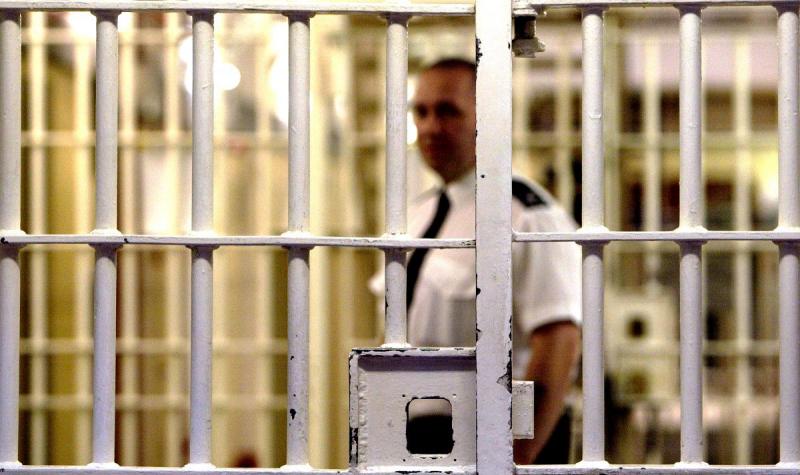
The United States incarcerates more people per capita than any other nation. About 2.3 million Americans are in prison or jail, over half of them in state prison.
For some reform advocates, bringing higher education to prison is, though short of an antidote to mass incarceration, a salve on its wounds. That education increasingly includes online models.
“There’s tremendous evidence that recidivism rates plummet when people acquire higher education in prison,” said Marc Howard, director of Georgetown University’s Prisons and Justice Initiative and a professor at the college. Some estimate that people who participate in education programs while in prison have 43 percent lower odds of recidivating than those who do not.
Because the imprisonment costs taxpayers an average of over $30,000 per inmate annually, advocates emphasize that the return on investment for the state can be huge. Additionally, Howard said, prisons become safer for inmates and staff when education is accessible. And because the recidivism rate decreases, fewer citizens are likely to be victims of crime when prisoners re-enter society.
“If you care about bringing costs down, if you care about making communities safer, if you care about having better families where children have role models who are in school like they are,” he said, “there’s so many benefits that extend from prison education for a very, very small price tag.”
Lois Davis, a senior policy researcher at the RAND Corporation who researches criminal justice and prisoner re-entry, emphasizes that providing higher education in prison is not “coddling” inmates.
“It’s important to realize that 95 percent of the people who are incarcerated will eventually come back to your community,” she said. “So the question is what do you want that to look like? If you invest in rehabilitation, then you have a chance that when they return they don’t return to crime, but instead they are able to get employment, they’re able to support their families.”
In some states, corrections departments and colleges that want to add postsecondary education programs behind bars are turning to online instruction. Though digital programs may be easier to scale, challenges inherent to prison ed, as well concerns about quality, still remain.
Online on Lockdown
Eastern New Mexico University, Roswell, has been providing online classes to correctional facilities for about a decade. Inmates at nine New Mexico facilities can access ENMU’s Blackboard site from a prison computer on a “lockdown browser,” which prevents them from going to any other site, said Chad Smith, assistant vice president for technical education at Roswell. To participate, inmates must have proof of a high school diploma or GED, reading and math skills at the 10th grade level, and a clear conduct record.
The courses, which can lead to an associate degree in university studies from ENMU, cover general education requirements with some focus on business. If students are released, their credits are transferable to any other ENMU campus. The tuition for the courses, up to two per semester, is paid entirely by the New Mexico Department of Corrections.
Some experts note that this financial arrangement is unusually progressive. It’s more common for programs to depend on funding from family members or private philanthropy, Davis said.
Prison inmates were eligible for Pell Grants until 1994, when President Bill Clinton’s crime bill eliminated their access to federal aid. In 2015, the Obama administration started an initiative called Second Chance Pell, which has allowed inmates at 64 experimental sites to qualify for federal aid.
The online program at ENMU Roswell is not part of the experiment.
When inmates use the “lockdown browser,” Smith said, all live links to the outside internet are scrubbed. The course instructor can communicate with an inmate over Blackboard, but never verbally. If a student needs help only an instructor can give, that communication goes through a facilitator, an employee of the prison.
Sometimes creative solutions are called for to make college work in prison. For example, inmates can’t access the live internet to do research projects, so instructors will have to come up with alternative assignments for those students. Inmates can’t order the books they need themselves, so an employee of the university will order them from a chain bookseller and have them sent directly to the facility.
When courses are held in person at prisons, similar problems can crop up.
“Bringing materials inside is very difficult,” said Howard, who has taught in prisons for about six years. “Most programs you can bring in paper, paperback books, copies and so on. But in terms of bringing scientific equipment and having labs and courses that involve much more hands-on work or technology, those will be difficult if not impossible to do.”
Depending on the state, getting certain books might also be challenging. Lists of banned books for prison inmates can be long and include some unexpected entries. According to a 2019 PEN America paper, the memoirs of President Barack Obama were banned by a Colorado facility because they were deemed “potentially detrimental to national security.” An Ohio prison prevented an inmate from receiving a biology textbook, concerned it contained nudity. And a few years ago, after the New York State prison system was found flowing with heroin and rife with the attendant overdoses, Governor Andrew Cuomo briefly limited the number of vendors that books could be sent through to incarcerated students to only six.
Though it varies by year, Smith estimated that Roswell enrolls about 40 to 50 students across all facilities per semester, but only about three to 10 students graduate per year. Sometimes the facility will go on lockdown and no internet access or classes are permitted, Smith said. Other times an inmate will simply be moved to another facility and can’t continue their work.
“Just because you start a program at one facility doesn’t mean the Department of Corrections won’t transfer you because of things like cuts or you’re up for parole,” said Meagan Wilson, a senior analyst at Ithaka S+R, referring to prison systems in general. “That can completely block any education that you started.”
The payoff for all the trouble and coordinating, Smith said, is worth it. In addition to the fact that the university increases its enrollment (which typically comes with an increase in state funding) and gets tuition from the department, it makes a difference in the lives of inmates.
“When we can, we do a little graduation ceremony at the facility for people when they finish,” he said. “By and large they’re incredibly grateful that the opportunity has been given for them to do higher education. It gives them hope for the lifestyle that they want when they get out. It gives them something to work towards that I think is very rewarding.”
Evaluations and Concerns
Online college courses are available in several prisons. How many, though, isn’t really known.
“There’s a huge lack of information about this population,” said Wilson. “We don’t even know the full enrollment count of how many students in America are enrolled in higher education-in-prison programs.”
As for their benefits, offering online courses could be a solution for rural states with remote facilities, some have said.
“These prisons were not meant to be conveniently accessible,” said Kurtis Tanaka, an analyst with Ithaka S+R. “Especially for an in-person model, this can be a challenge.”
However, just like online education on “the outside,” concerns about quality still remain. And evaluating quality has been the subject of relatively little research.
“We don’t know things that we know for nonincarcerated students, like rate of completion, engagement, transfer,” said Wilson. “We just don’t know much about what works best for this population, because it’s just been so neglected from a research point of view for a long time.”
Davis called for studies that evaluate prison education programs. “Getting inside the black box to understand, what are the program components that are important to enable an individual to be successful?” she said. “That’s what we need to understand better.”
For Howard, however, online education in prisons is just a diluting of in-person courses.
“Some education is better than no education,” he said. “[But] what incarcerated people need more than anything is outsiders coming in, people to connect with, people who are aspirational role models, people who treat them with respect, who see their humanity and their dignity. Online programs can’t provide that. And if anything, they really enforce the isolation and the separation.”
The fear of predatory private companies exploiting the prison population is also strong. In recent years corrections departments and their contractors have come under fire for providing inmates with “free” tablet computers. Though inmates didn’t have to pay to open a tablet, doing anything on it, like listening to music, sending an email or reading a public domain ebook, came at a price, sometimes an exorbitant one. Even when they are working for wages, federal inmates earn between $0.12 and $1.15 an hour.
“This is a historically exploited and vulnerable learning community,” said Wilson. “We have to make sure, just like we do with for-profit colleges, that there isn’t going to be area for exploitation and a situation where students don’t have choice.”
Though concerns about the best program model still abound, the benefits of offering higher education in prison have achieved a rare amount of bipartisan support.
“Prison education is the solution that will stop recidivism. We have the ingredients. We have the formula. We just need to implement it and support it and expand it,” said Howard. “The alternative is just warehousing, abandoning, and then at some point when people are released, being upset when new crimes take place.”
[“source=insidehighered”]






